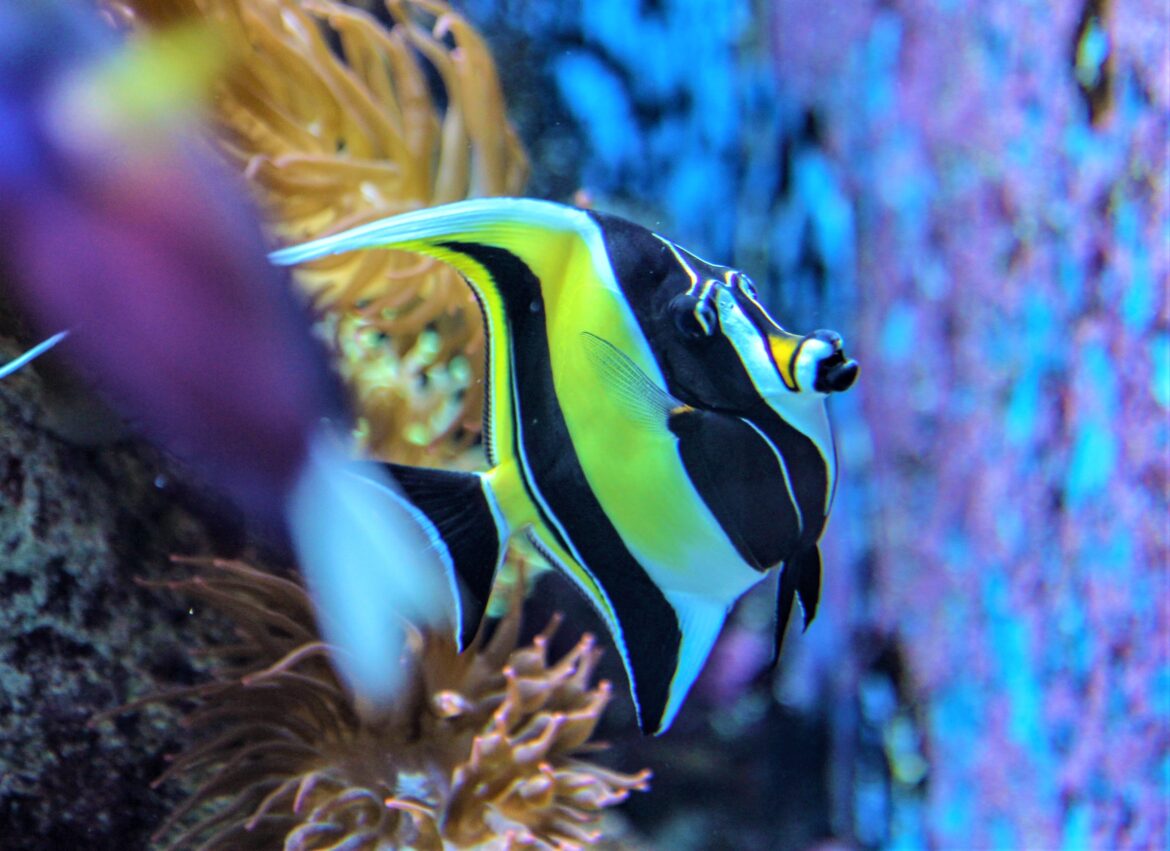Not everyone can be expected to appreciate the energy of a loving German Shepherd or even the antics of a Persian cat. Some animal lovers enjoy viewing the beauty and tranquility of their pets from afar. It is little wonder then that fish make trendy pets. And no aquarium is complete without angelfish.
But do angelfish change color? Yes, angelfish can change color. They possess chromatophores and iridophores in their dermis, cells which work together to reflect light and create the vibrant color of their scales, along with melanosomes, which control the distribution of melanin.
You can get palpitations when you see that the beautiful colors of your angelfish have faded away. But, you have to understand that angelfish can and do change color for reasons that aren’t necessarily concerning. So if you’re interested in the color-changing that your angelfish does, continue to read on.
How Do Angelfish Change Color?
Angelfish have two layers of skin: the dermis and the epidermis. Now, the dermis has chromatophores that are cells that work for the development of scales. But the chromatophores also work with iridophores that are reflective cells. These two different cells give angelfish the vibrant colors that they have.
But, the ability to change colors comes with melanosomes and melanin. Melanin is the substance that absorbs light, and melanosomes work for the synthesis of melanin.
Melanosomes control the movement and storage of melanin. Therefore, giving angelfish the ability to change color.
What Causes Angelfish To Change Color?
Angelfish change color in many circumstances, and not all of them are worrisome. So, let’s take a look at some of the reasons why angelfish changes color.
1. Changes In The Environment
Many fish parents vouch that their angelfish change colors once they are adopted and placed into their new aquariums. They say that their colors became brighter and more vivid.
Now, you have to understand that pet stores have to accommodate a lot of fish in limited spaces. Hence, the fish often live in cramped spaces.
But, once the angelfish are in larger fish tanks with more greenery and plenty of space, their color automatically becomes more pronounced due to both their physical and mental health improving.
2. The Life Cycle
Younger fish do not have as bright colors as more adult fish. Therefore, if you have adopted fish while they’re still young, you need not fret about their colors, as they will develop with time.
3. Stress And Fear
In their enthusiasm for their fish, many first-time pet parents cramp the tank with too many fish and little greenery.
Angelfish use the foliage to avoid confrontations. With little space to hide and way too much competition, your angelfish will lose its colors, trying to prevent itself from attracting any unwanted attention.
The same holds true when you change the environment for some angelfish. Place an angelfish in a new aquarium, and it will lose its color. Only when it feels comfortable in its new home will the colors brighten up again.
4. Diet
Yes, you will be asked to feed your angelfish with flakes and pellets (this is my favorite brand). But if your fish isn’t getting enough nutrients as its daily intake, then its color will fade.
So, the best idea is to head to an exotic vet as soon as you have adopted your fish babies to ensure that all is well with them. And to get a clear idea about the best diet for them from a professional. You may also want to get their water tested to make sure all is well in their environment.
5. Light Changes
Some angelfish react to changes in light with far more alacrity than others. You may have switched off the light, and when you turn it back on, your fish’s colors may have become lighter. The color comes back after some time. In such circumstances, there is no need for you to be concerned.
How To Make Sure Your Angelfish Is Healthy
Well, the easiest way to make sure that your fish stays healthy is to give it the care and attention it deserves. It is essential to keep the tank clean. Placing water filters and proper lighting is a must. And, adding greenery and other ornaments makes the habitat more pleasant for your fish.
One aspect that you should never ignore is that the water must be dechlorinated and changed at least every three weeks, even if you have employed the help of snails, plecos, mollies, or catfish.
And, never add too many fish to the aquarium. It helps to find out which fish do well with other species so that you don’t add in any that are too hostile.
Final Thoughts
It is generally a good idea for first-time pet parents to start with a smaller tank and fewer fish. Angelfish are pretty sturdy when it comes to their constitution.
Moreover, they do well with many other species of fish. But they still require a lot of care when it comes to their diet and upkeep. So give your fish the love it deserves and enjoy your time together.
Up Next: How Do Clownfish Sleep?
